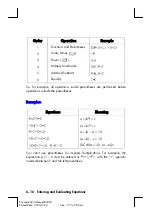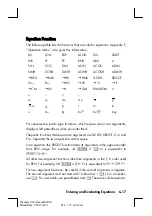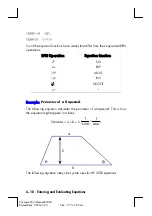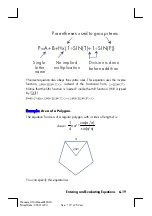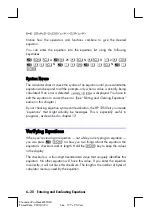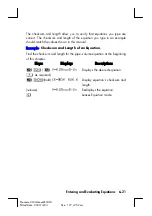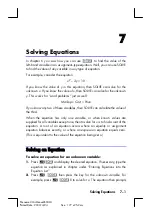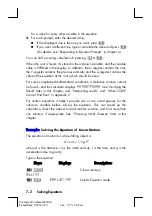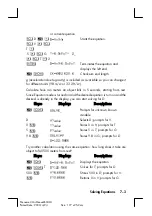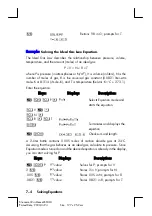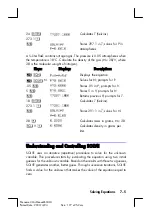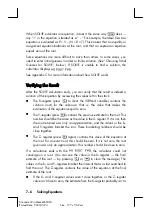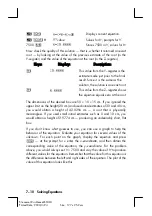
7–6 Solving
Equations
File name 32sii-Manual-E-0424
Printed Date : 2003/4/24 Size : 17.7 x 25.2 cm
When SOLVE evaluates an equation, it does it the same way
W
does —
any "=" in the equation is treated as a " – " For example, the Ideal Gas Law
equation is evaluated as
P
×
V
– (
N
×
R
×
T
). This ensures that an
equality
or
assignment
equation balances at the root, and that an
expression
equation
equals zero at the root.
Some equations are more difficult to solve than others. In some cases, you
need to enter initial guesses in order to find a solution. (See "Choosing Initial
Guesses for SOLVE," below.) If SOLVE is unable to find a solution, the
calculator displays
!
.
See appendix C for more information about how SOLVE works.
Verifying the Result
After the SOLVE calculation ends, you can verify that the result is indeed a
solution of the equation by reviewing the values left in the stack:
The X–register (press
to clear the VIEWed variable) contains the
solution (root) for the unknown; that is, the value that makes the
evaluation of the equation equal to zero,
The Y–register (press
9
) contains the previous estimate for the root. This
number should be the same as the value in the X–register. If it is not, then
the root returned was only an
approximation
, and the values in the X–
and Y–registers bracket the root. These bracketing numbers should be
close together.
The Z– register (press
9
again) contains this value of the equation at
the root. For an exact root, this should be zero. If it is not zero, the root
given was only an
approximation
; this number should be close to zero.
If a calculation ends with the
!
, the calculator could not
converge on a root. (You can see the value in the X–register — the final
estimate of the root — by pressing
or
a
to clear the message.) The
values in the X– and Y–registers bracket the interval that was last searched to
find the root. The Z–register contains the value of the equation at the final
estimate of the root.
If the X– and Y–register values aren't close together, or the Z–register
value isn't close to zero, the estimate from the X–register probably isn't a



